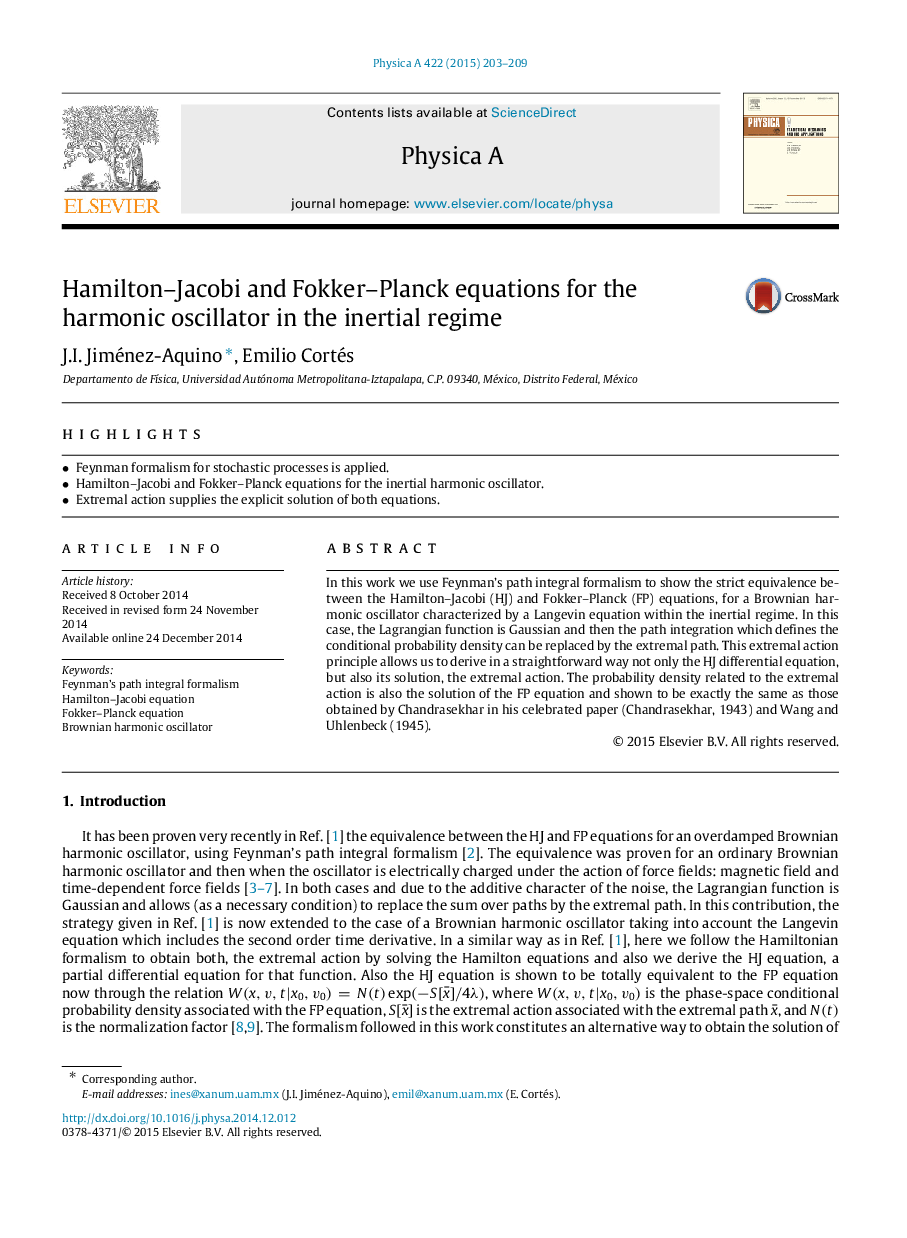| Article ID | Journal | Published Year | Pages | File Type |
|---|---|---|---|---|
| 975114 | Physica A: Statistical Mechanics and its Applications | 2015 | 7 Pages |
•Feynman formalism for stochastic processes is applied.•Hamilton–Jacobi and Fokker–Planck equations for the inertial harmonic oscillator.•Extremal action supplies the explicit solution of both equations.
In this work we use Feynman’s path integral formalism to show the strict equivalence between the Hamilton–Jacobi (HJ) and Fokker–Planck (FP) equations, for a Brownian harmonic oscillator characterized by a Langevin equation within the inertial regime. In this case, the Lagrangian function is Gaussian and then the path integration which defines the conditional probability density can be replaced by the extremal path. This extremal action principle allows us to derive in a straightforward way not only the HJ differential equation, but also its solution, the extremal action. The probability density related to the extremal action is also the solution of the FP equation and shown to be exactly the same as those obtained by Chandrasekhar in his celebrated paper (Chandrasekhar, 1943) and Wang and Uhlenbeck (1945).
